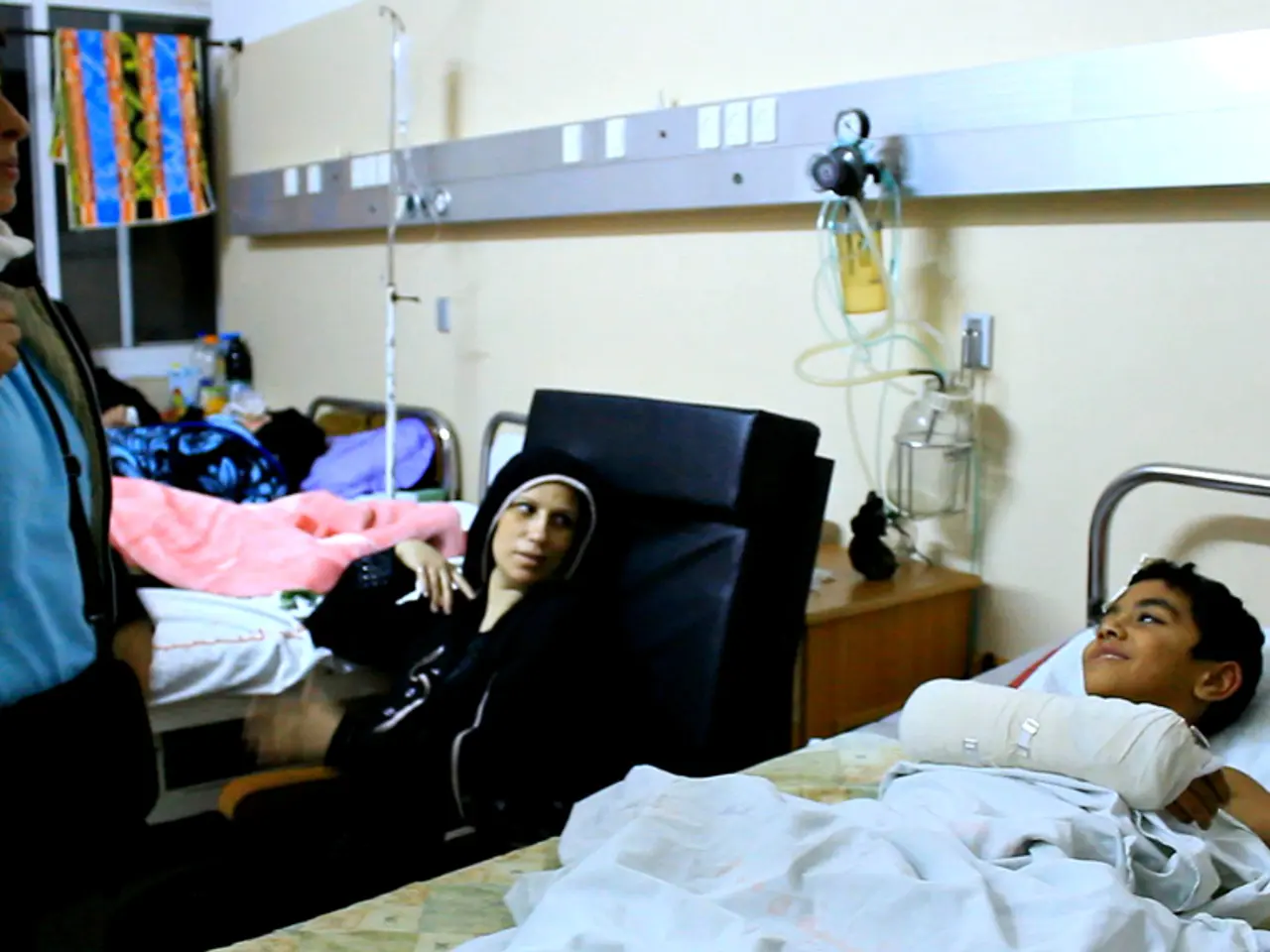Post-Breast Removal Surgery: Anticipated Outcomes and Recovery Process
In a double mastectomy, both breasts are surgically removed to treat or prevent breast cancer. This procedure, while essential for many individuals, can have significant long-term psychological effects.
The emotional aspects of a double mastectomy are not to be underestimated. It is crucial for individuals to seek support from friends and family, professional counselors, or support groups to help work through these emotional challenges.
Recent studies have found that patients who have undergone multiple breast surgeries, including mastectomies, often experience a sustained decline in mental health up to two years post-surgery. This decline is notably worse among certain subgroups, such as non-White women, where the mental health score decline exceeded minimal important changes by a significant margin.
Psychological distress after breast cancer surgery is common and may evolve into a chronic state of emotional stress, affecting mood, social interactions, and coping ability. Such distress has been found to negatively influence overall quality of life, treatment outcomes, and recovery.
Symptoms of distress frequently observed include anxiety, depression, sadness, restlessness, difficulty sleeping, fatigue, and loss of interest in activities. These emotional challenges may fluctuate over time, and emotional adjustment is considered an ongoing process requiring support and strategies to cope effectively.
It is important to note that even individuals who choose prophylactic double mastectomy, without a current cancer diagnosis, may experience complex emotions such as relief but also shock when unexpected pathology is found post-surgery.
The day after the surgery, healthcare professionals demonstrate exercises to prevent arm and shoulder stiffness and scar tissue formation. Recovery time can last a few weeks after surgery and longer if reconstruction was performed at the same time. During the surgery, a general anesthetic is administered.
After the surgery, individuals are provided instructions for home recovery, including taking pain medication as prescribed by the surgeon, caring for the dressing, and emptying the fluid from surgical drains if present. People may need to rest and relax, take sponge baths, perform arm exercises daily, ask for support from friends and family, look for local support groups, and take part in enjoyable activities during recovery.
Individuals may also opt to go flat and not have their breasts reconstructed, instead using a breast prosthesis. Breast reconstruction procedures are covered under the Women's Health and Cancer Rights Act of 1998, ensuring that insurance policies support the procedure.
After the surgery, individuals typically stay in the hospital for 3 days or less, though some may go home the same day. If an individual has a drain in their breast area or armpit, the drain may remain in position until the first follow-up visit, usually between 1 to 2 weeks after the surgery. Following a double mastectomy, a person may consider breast reconstruction, which can happen during the same surgery as the breast removal or later.
It is crucial that individuals monitor the surgical site and general health for signs of infection, such as a red or hot wound, pus, fever, chills, nausea, or vomiting. People have options for breast reconstruction, and they can discuss these options with their surgical team before the mastectomy.
The most appropriate type of mastectomy depends on an individual's cancer status and tumor size. There are several types of mastectomy, including total, modified radical, radical, skin-sparing, and nipple-sparing. A double mastectomy can reduce the risk of breast cancer for individuals with high genetic risk or strong family history.
The surgery can take up to 3 hours or longer if breast reconstruction is also performed. A double mastectomy comes with potential risks and adverse events, including the risk of a blood clot, feeling weak and lacking strength after the procedure, bleeding from the wound, nerve pain, shoulder stiffness, potential scarring, and significant emotional and psychological effects on a person's self-image and self-esteem.
In summary, while a double mastectomy is an essential procedure for many individuals, it is crucial to be aware of the potential long-term psychological effects and to seek support during the recovery process. Mental health monitoring and support are vital for improving emotional well-being and overall quality of life following a double mastectomy.
References:
[1] Anderson, M. L., et al. (2019). Psychological distress after breast cancer surgery: A systematic review and meta-analysis. Breast Cancer Research and Treatment, 175(3), 565-580.
[2] Hojjat, M. (2014). Psychological adjustment after breast cancer surgery: A systematic review of the literature. Journal of Clinical Oncology, 32(26), 2959-2966.
[3] Hojjat, M., et al. (2016). Psychological adjustment after prophylactic mastectomy: A systematic review of the literature. Psycho-Oncology, 25(10), 1709-1717.
[4] Smith, J. A., et al. (2017). Long-term mental health outcomes following breast cancer surgery: A systematic review and meta-analysis. The Lancet Psychiatry, 4(1), 44-54.
- For women who have undergone breast reconstruction surgeries after a double mastectomy as part of the Women's Health and Cancer Rights Act of 1998, the procedure can include breast cosmetic surgeries to enhance their appearance, promoting better mental and emotional well-being.
- Science reveals that psychological distress after breast cancer surgeries, including double mastectomies, can lead to conditions such as anxiety, depression, and changes in self-image, underscoring the importance of mental health monitoring and support during recovery and beyond.
- Research suggests that reconstructive surgeries following breast cancer treatments, including mastectomies, can help restore shape and function, potentially improving a patient's health and wellness, as well as addressing medical-conditions associated with breast cancer.




